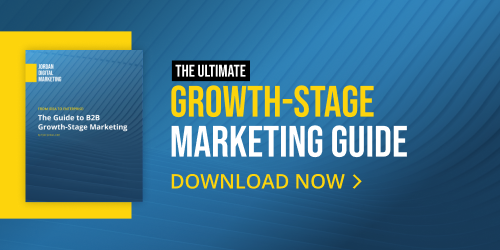Proactive vs. Reactive Strategic Planning: Best Practices for Client-Facing Initiatives
In a recent bid to offer advertisers greater control over their brand campaigns, Google launched two new Search and Performance Max campaign features. While changes to platforms can often cause headaches for advertisers, these are ones we can get behind. These two new features will grant advertisers the power to fine-tune brand targeting and exclusions for better ad performance.
Let’s take a look at these new brand settings and discuss how they’ll provide a positive impact on your overall Google Ads strategy.
Brand Restriction for Search Campaigns
The first of the new features is Google’s brand restriction for Search Campaigns. This feature combines the benefits of broad match with precise brand targeting, meaning advertisers can now tailor broad match traffic to appear exclusively on searches that include specific brands and/or the related brand products selected. For example, if you were to select “Fitbit” as a brand restriction, your ads would only show up when users search for “Fitbit” or related products to Fitbit such as the “Versa 4.”
Brand Traffic Exclusions from Performance Max
The second feature is one of the most exciting updates in our opinion. It provides advertisers with the ability to exclude specific brands from Performance Max campaigns. This additional control means you’ll be able to prevent Performance Max cannibalization with brand search campaigns, avoid certain branded queries, and block traffic from misspellings. By selecting brands to exclude, including your own brand or terms or third-party terms, you can ensure a more accurate performance evaluation.
Which Feature Is the Most Impactful?
Between the two features, brand traffic exclusions seem to be the bigger game-changer for advertisers. Performance Max campaigns, while seemingly successful, have historically cannibalized and taken credit away from brand search campaigns. This undo credit may have made Performance Max look like an incredibly successful campaign type; when in reality, it might just be eating up all your branded search conversions. Now, by excluding branded terms from Performance Max, advertisers can gain clearer insights into its true performance without inflated metrics.
3 Best Practices for Implementing Brand Settings
When getting started with these new brand settings, here are three best practices you should keep in mind:
- Exclude your brand name from Performance Max: This prevents overinflated performance metrics to view more accurate campaign data. If your brand name isn’t on the list, submit a request for it to be added. This can take up to 4 to 6 weeks so it’s a good idea to check it now before launching.
- Monitor search terms: After adding exclusions, check your search terms regularly to make sure your brand terms aren’t still showing in Performance Max ads. You can do this by Selecting Campaign > Insights > Consumer Spotlight > Search Term Insights.
- Continue running brand search campaigns: Maintain regular Brand Search campaigns to ensure you’re still getting comprehensive coverage of your brand terms.
The Hope for Future Brand Controls
While this recent update in brand controls is promising, advertisers like ourselves are eager for more from Google. Here are just a few features we hope to see rolled out in the future:
- The ability to add generic negative keywords to Performance Max: Like Search campaigns, the option to add negative keywords would significantly help with specific Performance Max campaigns.
- Enhanced conversion insights: More details into conversation locations, networks, placements, assets, and search terms for better campaign optimization.
- Additional levers for pausing or excluding: More control over networks, placements, assets, and search terms based on performance.
Overall, Google’s new brand settings for Search and Performance Max campaigns have opened the door for better control and optimization opportunities surrounding brand traffic and holistic Google ad performance.
Need help refining your Google ad performance with these new features? Contact Jordan Digital Marketing to request an audit for your paid search strategy!

Aug 1, 2023 7:38:33 AM


-Dec-29-2025-08-39-03-0239-PM.png?width=500&height=500&name=Regular%20Blog%20Hero%20(3)-Dec-29-2025-08-39-03-0239-PM.png)
-Dec-17-2025-09-01-13-5742-PM.png?width=500&height=500&name=Regular%20Blog%20Hero%20(2)-Dec-17-2025-09-01-13-5742-PM.png)

